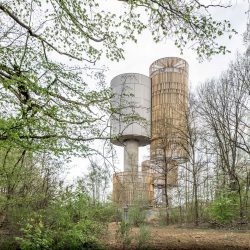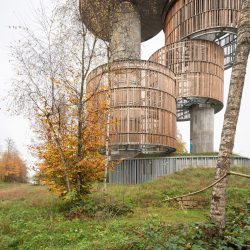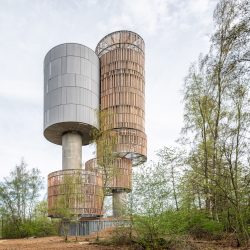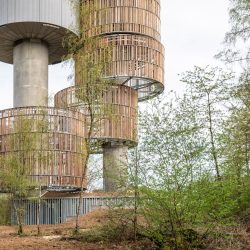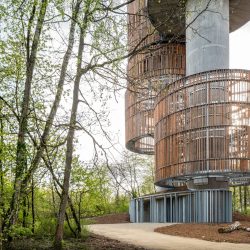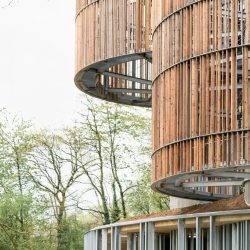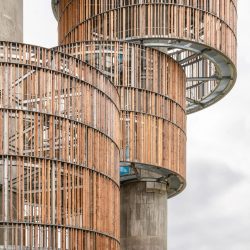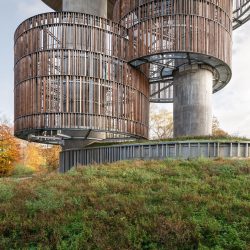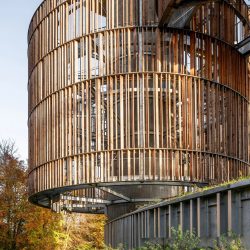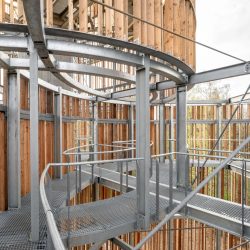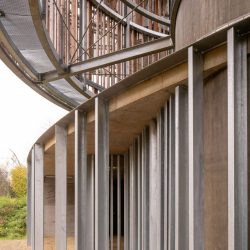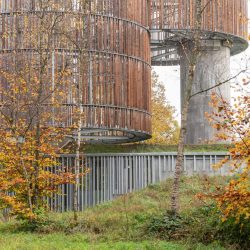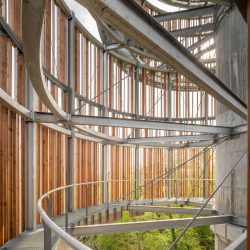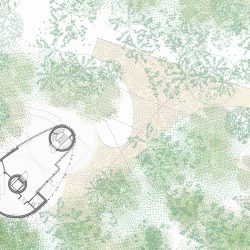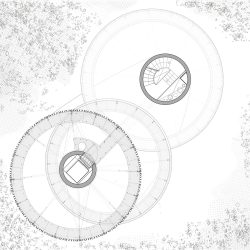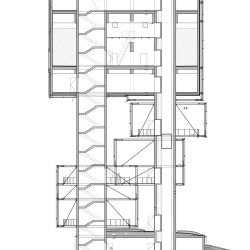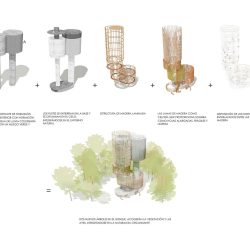
Amann-Canovas-Maruri . Adelino Magalhaes . photos: © Miguel Fernández-Galiano
The project is located in a protected forest of the “Natura 2000 Network” in the city of Luxembourg. The challenge is to integrate 1000m3 and 50-meter-high drinking water tanks into a fragile context. To do this, a program is generated that, after studying the conditions of the forest and its relationship with other “Natura 2000 Network” forests, includes spaces not only for local birds, but also a refuge for seasonal species. In the same way, the building serves animal and plant species and has the vocation of becoming another tree in the area. Its reflection goes, then, beyond human needs and therefore becomes a more than human project.
The program is divided into two volumes designed according to the strictest technical specifications. The first is resolved with a rough, prefabricated concrete skin in which swallow nests are inserted in an orderly fashion at different heights and with precise orientations. Also in this volume, a nest for peregrine falcons is built at a height of 50 m. Both the materials and the locations are studied by groups of naturalists and ornithologists who complement the design team. The second volume is covered in cork, which acts as a layer of thermal insulation against the water tank. On top of this element, a second permeable skin of untreated larch wood is built, which facilitates the nesting of seasonal species and on which bat nests are placed. This wooden skin will eventually be covered with vegetation, thus constructing a complement to the local ecosystem. The ground floor is protected with a metallic permeable skin that acts as a deterrent against intrusion into a strategic infrastructure. The exterior and interior pavements of this area are made of rammed earth and its roof also becomes an element of vegetal cover.
On the other hand, the collection of rainwater that is stored outside is studied. In short, a strictly contextual project is built that walks with nature.
_
El proyecto de sitúa en un bosque protegido de la «Red Natura 2000», en la ciudad de Luxemburgo. El reto consiste en integrar en un contexto frágil unos depósitos de agua potable de 1000m3 y 50 metros de altura. Para ello se genera un programa que, después de estudiar las condiciones del bosque y su relación con otros de la “Red Natura 2000”, incluya espacios no tan solo para las aves locales, sino también un refugio para especies estacionales. De la misma manera el edificio atiende a las especies animales y a las vegetales y tiene la vocación de convertirse en un árbol más del lugar. Su reflexión va, entonces, más allá de las necesidades humanas y se convierte por tanto en un proyecto más que humano. El programa se separa en dos volúmenes diseñados según las más estrictas especificaciones técnicas, el primero se resuelve con una piel de hormigón prefabricado y rugoso en la que se insertan ordenadamente nidos de golondrinas a distintas alturas y con orientaciones precisas, también en este volumen se construye a 50m de altura un nido para los halcones peregrinos, tantos los materiales como los lugares están estudiados por grupos de naturalistas y ornitólogos que complementan al equipo de diseño. El segundo volumen se reviste en corcho que actúa como una capa de aislamiento térmico frente a la cuba de agua. Sobre este elemento se construye una segunda piel permeable de madera de alerce sin tratar en la que se facilita el anidado de especies estacionales y sobre la que se colocan los nidos de murciélagos. Dicha piel de madera acabará por cubrirse de vegetación, construyendo así un complemento al ecosistema local. La planta baja se protege con una piel permeable metálica que funciona como disuasión frente a la intrusión a una infraestructura estratégica. Los pavimentos exteriores e interiores de esta zona son de tierra apisonada y su cubierta se convierte también en un elemento de capa vegetal. Por otra parte se estudian las recogidas de agua de lluvia que se almacenan en el exterior. En definitiva se construye un proyecto estrictamente contextual que camina con la naturaleza.

